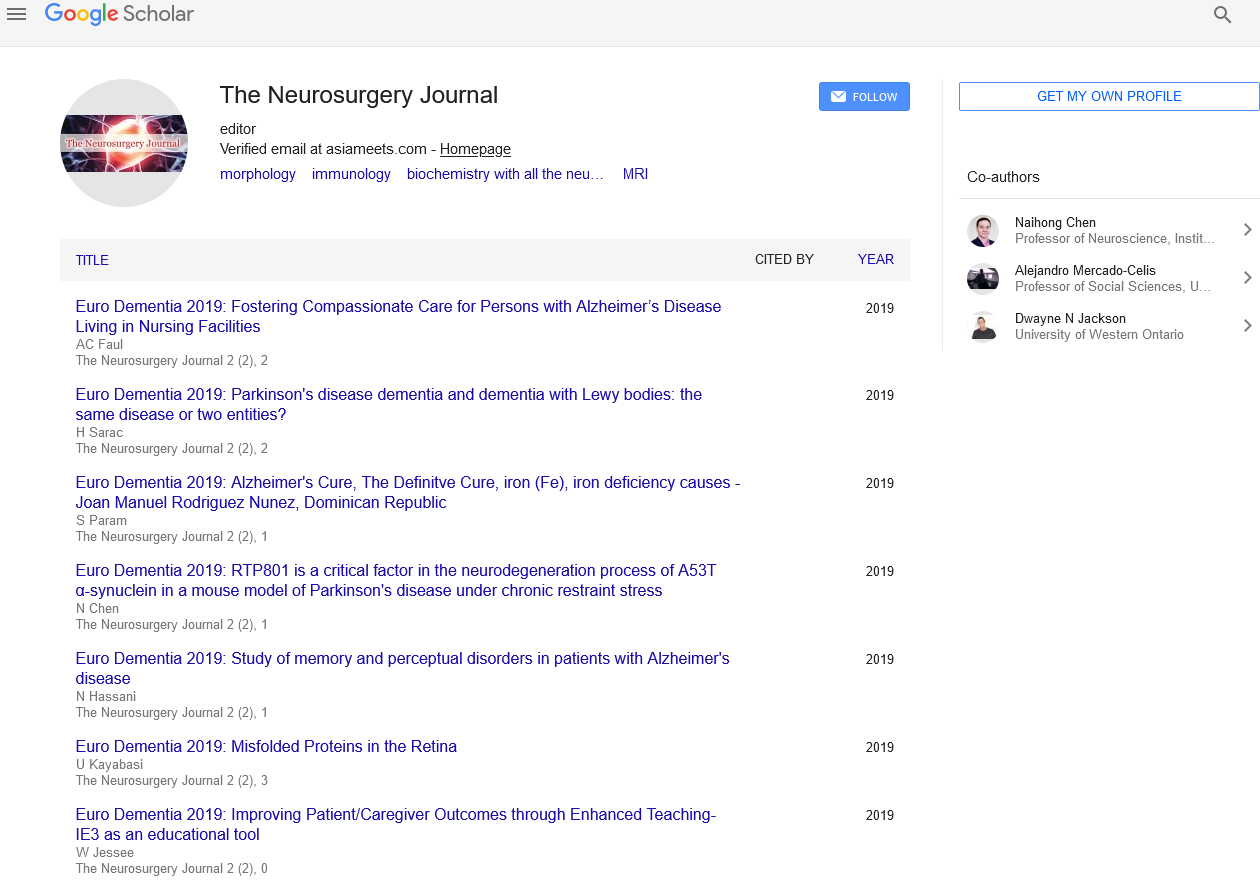study about back pain
Received: 01-Oct-2021 Accepted Date: Oct 15, 2021; Published: 22-Oct-2021
Citation: George W. Study about back pain. Neurosurg J.2021;4(2):1.
This open-access article is distributed under the terms of the Creative Commons Attribution Non-Commercial License (CC BY-NC) (http://creativecommons.org/licenses/by-nc/4.0/), which permits reuse, distribution and reproduction of the article, provided that the original work is properly cited and the reuse is restricted to noncommercial purposes. For commercial reuse, contact reprints@pulsus.com
Description
Back pain is usually felt in the back. Back pain may be categorized into neck pain (cervical), middle back pain (thoracic), lower back pain (lumbar), or coccydynia (tailbone or sacral pain) depend on the compartment influenced. The lumbar region is the most well-known region influenced. A scene of back torment might be intense, sub-intense, or constant dependent upon the lifespan. The aggravation might be portrayed as a dull hurt, shooting or puncturing torment, or a blistering sensation. The inconvenience can transmit into the arms and hands just as the legs or feet and may include numbness or deficiency in the legs and arms.
Most of the back pain is indiscriminate with unrecognizable sources. General mechanisms include degenerative or traumatic changes to the discs and aspects joints, which would then could be able to cause auxiliary pain in the muscles, including nerves, and alluded agony to the bones, joints, and limits. Infections and irritation of the gallbladder, pancreas, aorta, and kidneys may likewise cause alluded torment toward the back. Growths of the vertebrae, neural tissues, and neighboring constructions can also show back pain.
Back pain is categorized based on terms of duration:
Acute back pain keeps going <6 weeks
Sub-acute back pain keeps going somewhere in the range of 6 and 12 weeks.
Chronic back pain goes on for more than 12 weeks.
The back pain can be avoided or prevent recurrence by improving physical condition and learning and practicing proper body mechanics: Exercise, build muscle strength and flexibility, maintain a healthy weight, and quit smoking.
The most general causes of lower back pain are strain and troubles with back structures: Strain, structural problems, having arthritis, and osteoporosis.
The following factors are associated with a higher risk of developing low back pain: occupational activities, pregnancy, a sedentary lifestyle, poor physical fitness, older age, obesity and excess weight, smoking, strenuous physical workout, especially if done incorrectly, genetic factors, medical conditions, such as arthritis and cancer
Lower back pain is more prone in women than in men, conceivably due to hormonal elements. Stress, tension, and emotional problems have likewise been connected to back pain.
The primary indication of back pain is discomfort in the back, and here and there right down to the posterior and legs.
Some back problems can cause torment in different segments of the body, contingent upon the nerves influenced.
The aggravation frequently disappears without treatment, yet on the off chance that it happens with any of the accompanying individuals should see their physician:
• Weight loss
• Fever
• Inflammation or swelling on the back
• Persistent back pain was lie down, or resting does not help
• Having pain down the legs
• Having pain that reaches below the knees
• A recent injury, blow, or trauma to the back
• Enuresis
• Difficulty urinating
• Fecal incontinence or loss of control over bowel movements
• Suffering from insensibility around the genitals
• Suffering from insensibility around the anus
• A physical exam is typically all that which needed to diagnose back pain.
• During the physical exam, the doctor may test as mentioned below:
• Ability to stand and walk
• Spines range of motion.
• Reflexes
• Leg strength
• Ability to detect sensations in your legs
• If an original condition is suspected, the primary care the physician may arrange different tests, including:
• Blood and pee tests to check for fundamental conditions
• X-beams of the spine to show the arrangement of your bones and check for breaks
• CT or MRI to evaluate your plates, muscles, tendons, nerves, and veins
• Bone output to search for anomalies in the bone tissue
• Electromyography to test nerve conduction





